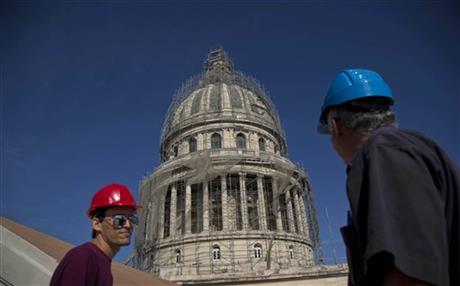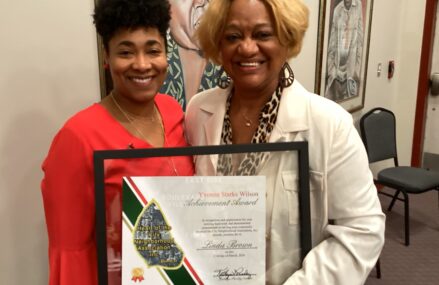
By ANDREA RODRIGUEZ
Fidel Castro’s rebels swept into Havana 56 years ago this month and went to work purging the U.S. legacy from a capital that had been a virtual outpost of Washington.
The Havana Hilton became the Havana Libre. Neon Coca-Cola signs were torn down. And the new government moved Cuba’s legislature out of the near-perfect replica of the U.S. Capitol building that had loomed over Havana for 30 years, a reminder of American influence.
The 300-foot neoclassical white dome later housed the Cuban Academy of Sciences and the Ministry of Technology and then, like so much of Havana, it fell into disrepair. Drain pipes broke, paint yellowed and wide cracks opened in the gold-leafed dome, turning the building into an eyesore in the heart of historic central Havana.
But in March, Cuba’s National Assembly will move back into the capitol thanks to the first phase of an extensive renovation project meant to restore the building to its former glory. The 600-member assembly meets twice a year to discuss, and almost always unanimously approve, proposals written by Communist Party leaders behind closed doors.
The reopening of the capitol to lawmakers carries a potent symbolism, coming as Cuba moves toward full diplomatic relations with the U.S. The timing of its reopening is coincidental, officials say.
In another coincidence, the U.S. Capitol in Washington is undergoing a $60 million renovation of its dome.
“They’re imitating us,” joked city historian Eusebio Leal, whose office oversees restoration work in historic Old Havana. “I started first!”
Opened in 1929, the Cuban capitol is smaller than its U.S. counterpoint overall but it is taller and its dome is bigger. Inside are massive granite stairs and a gigantic Egyptian onyx statue of a maiden warrior that symbolizes the republic.
The first phase of the renovation required the repair or replacement of drain and water pipes and wiring and involved extensive industrial architecture design work because the original plans for the building were mysteriously lost.
“There’s no point of comparison with anything we’ve done before,” said Mariela Mulet, an engineer for the city historian’s office, who said full restoration would take a year or two more.
The partial relaxation of the U.S. embargo on Cuba will allow Americans to travel here for “purposeful travel” that puts them in contact with ordinary Cubans, but on an honor system that wouldn’t require them to obtain special permits from the U.S. beforehand.
That has tourism officials dreaming of a flood of American visitors wandering through Old Havana’s dozens of renovated blocks of colonial architecture on tours that will take them to the newly restored capitol that echoes the skyline of their own country’s capital.
“It will really be a spectacular moment,” Leal said.
Follow us on twitter.com/WhatsUpKCity


